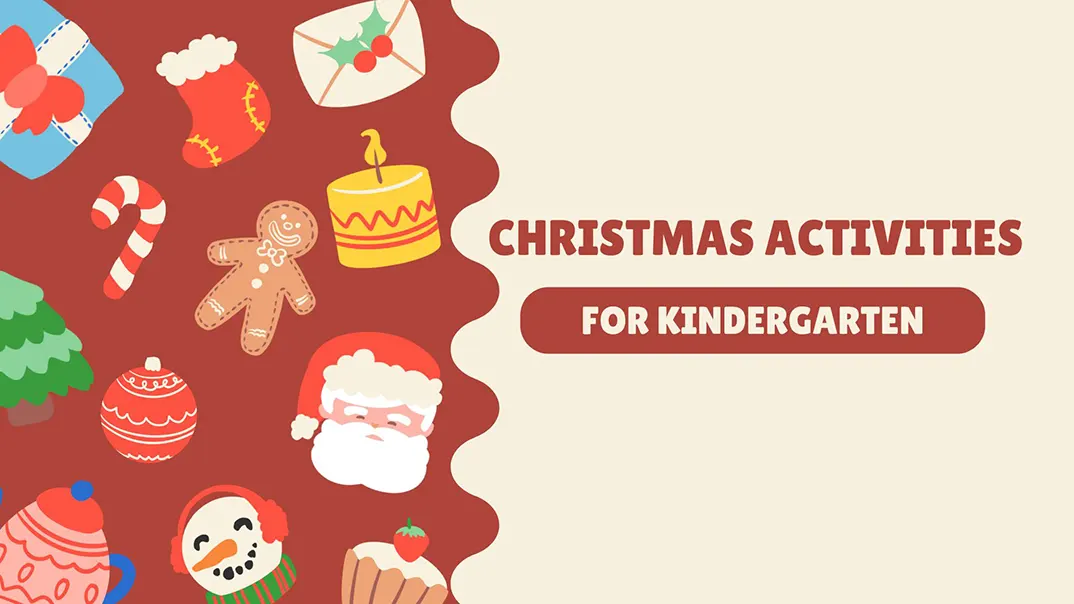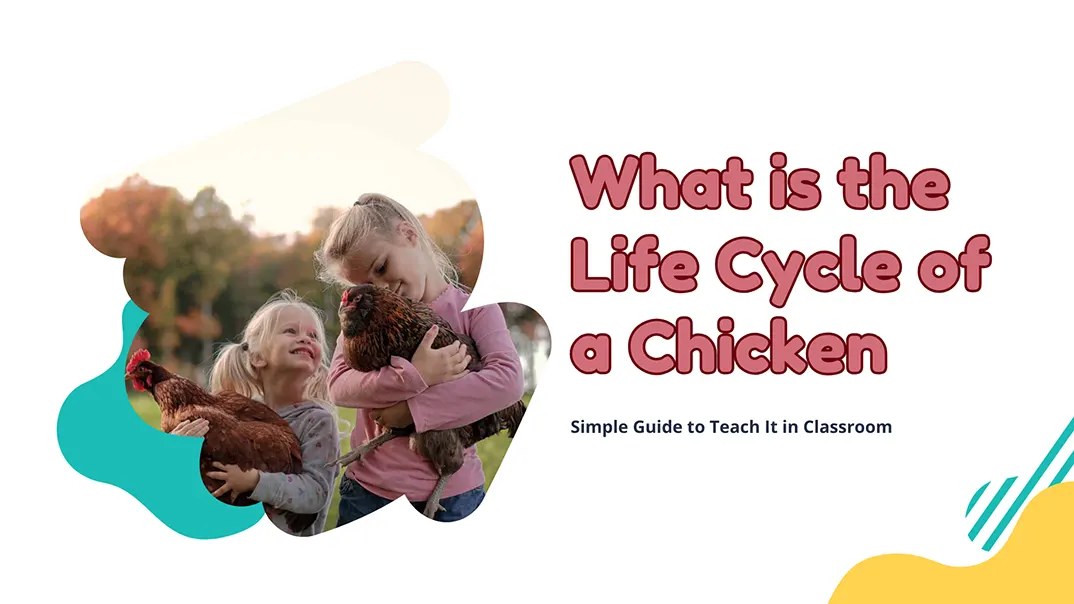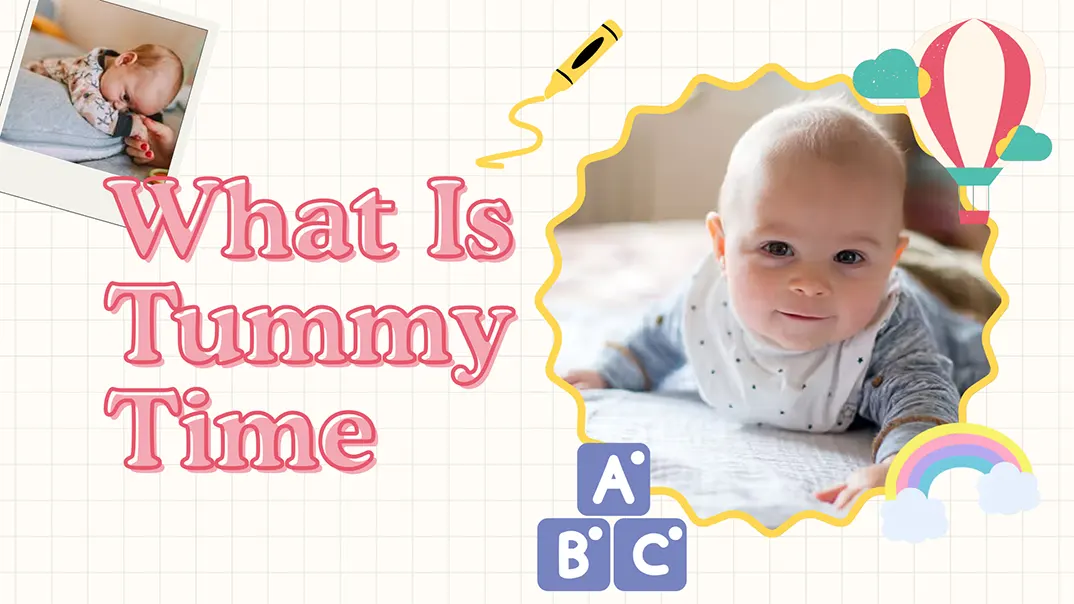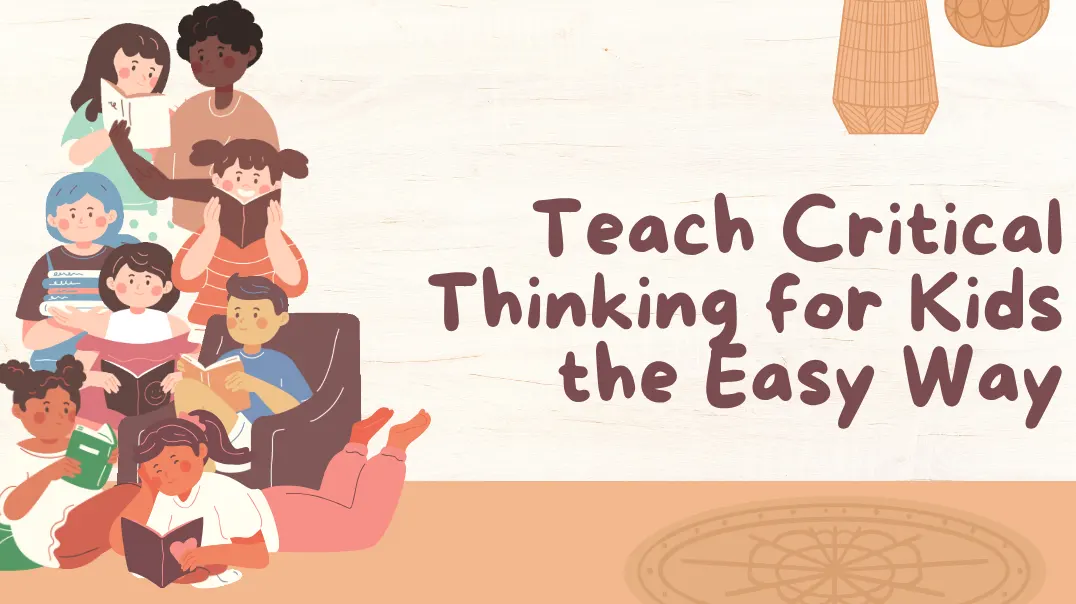Christmas activities for kindergarten are not just about festivities; they serve as a valuable tool for fostering young children’s social, emotional, and educational development. Through creative crafts, joyful songs, and collaborative games, children build essential skills while embracing the spirit of the holiday season. Let’s explore how to incorporate Christmas activities into kindergarten.
Why Christmas Activities Are Important for Kindergartens?
Building Social Skills
Christmas activities for kindergarten offer a wonderful opportunity to foster collaboration and celebrate the holiday season in the classroom. Children learn the importance of teamwork, communication, and sharing through group crafts, games, and performances. Participating in these activities encourages them to work together, take turns, and practice patience. Moreover, celebrating Christmas strengthens community and belonging as children bond over shared experiences. This togetherness enhances peer relationships and creates lasting memories of collaboration and friendship during this special time of year.
Enhancing Emotional Development
Christmas activities for kindergarten provide an ideal platform for children to learn about empathy and kindness. Through meaningful activities like gift-making or participating in a toy drive, children experience the joy of giving and thinking of others. Role-playing during skits or storytelling helps them understand different emotions and perspectives, fostering a deeper sense of empathy. Alongside these lessons, holiday activities bring excitement and happiness, essential for a positive school experience. The festive environment enhances emotional well-being and creates joyful memories, making children feel secure and valued in a nurturing classroom community.

Boosting Creativity and Fine Motor Skills
Christmas activities for kindergarten are a fantastic way to foster creativity and imagination in young children. Children can explore their artistic expression by crafting ornaments, cards, or holiday-themed art while enhancing their fine motor skills. Activities like cutting, gluing, and coloring help improve hand-eye coordination, providing valuable developmental benefits. Additionally, dramatic play, such as acting in a Christmas skit, nurtures imaginative thinking and creative problem-solving. These hands-on projects encourage children to use their creativity in fun, meaningful ways, making Christmas a perfect time to spark their artistic potential and imaginative minds.
Encouraging Cultural Awareness
Christmas activities for kindergarten introduce children to the joy of the holiday season and provide a valuable opportunity to explore cultural traditions and values. Learning about Christmas and its customs helps children understand the significance of shared practices, while inclusive activities promote respect for diversity, especially when incorporating multicultural elements. Teachers can use Christmas to teach children about other holidays celebrated worldwide, fostering a sense of global awareness and appreciation. These activities enrich children’s understanding of different traditions and encourage a spirit of inclusivity and respect for various cultures during the festive season.
Supporting Cognitive Development
Christmas activities for kindergarten offer a unique opportunity to integrate learning into the festive season. Activities such as counting ornaments, reading holiday stories, and exploring seasonal science concepts like snow add fun to the celebrations and help develop important skills like memory, focus, and problem-solving. Additionally, singing carols and reading Christmas books enhance vocabulary and language comprehension while encouraging children to share their holiday experiences, strengthening verbal communication. These festive activities allow children to learn while celebrating, making the holiday season educational and joyful.
Strengthening the Teacher-Child Bond
Christmas activities for kindergarten provide an excellent opportunity for teachers and students to connect through shared holiday experiences. Teachers build trust and rapport with their students by celebrating together, creating a positive and supportive classroom environment. These festive moments help reinforce the teacher-student relationship, which is crucial for fostering a strong learning foundation. The joy of participating in Christmas activities not only strengthens these connections but also enhances the overall classroom dynamic, making it a more engaging and nurturing space for learning.
Decorating the Classroom for Christmas
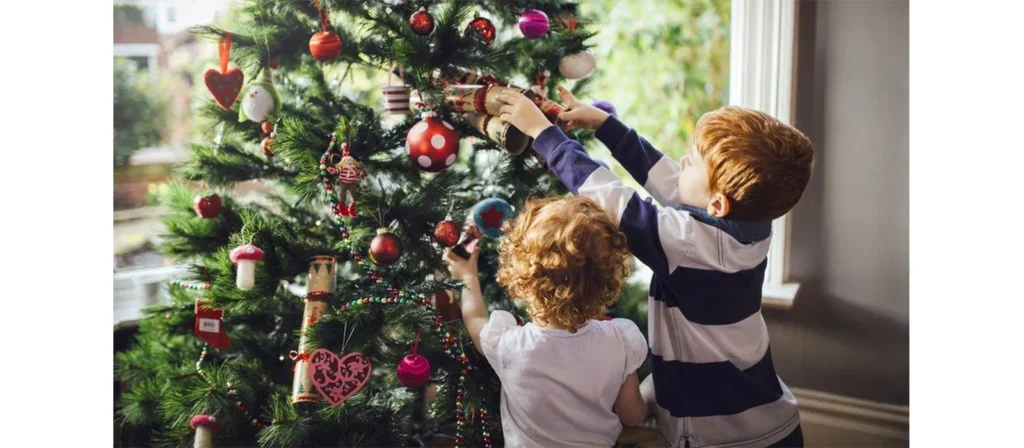
Transforming the classroom into a winter wonderland sets the mood for holiday fun and makes learning more engaging. You can turn the space into a magical holiday haven with a few simple and creative decorations.
- Paper Chain Garland:
Children can help create colorful paper chains to drape around the classroom. - DIY Christmas Tree:
Use a large piece of green felt to create a Christmas tree on the wall. Kids can add felt ornaments to decorate it. - Snowflake Cutouts:
Teach children how to fold and cut paper snowflakes to hang from the ceiling or windows.
When planning Christmas activities for kindergarten, it’s essential to prioritize safety by avoiding small items that could be choking hazards and ensuring that decorations are securely placed to prevent accidents. LED lights are a great alternative to traditional string lights for added protection. Another excellent choice for safety and sustainability is incorporating wooden materials in the classroom. Wooden toys and furniture, often used in holiday-themed activities, are durable, non-toxic, and free from harmful chemicals, making them a safe option for young children. Wooden items also support fine motor skills development and creativity as children engage in crafting, building, and role-playing activities. These natural materials complement the festive atmosphere while ensuring a safe, eco-friendly, and engaging environment for Christmas activities.
Transform Your Classroom with Custom Furniture Solutions
Creative Christmas Crafts for Young Children
Christmas activities for kindergarten are a wonderful way for children to enhance their skills while immersing themselves in the holiday spirit. Crafts, such as making ornaments and holiday cards, make the season festive and allow kids to express themselves artistically. These hands-on activities foster creativity, improve fine motor skills, and encourage attention to detail. As children participate in these fun and engaging tasks, they develop skills like coordination and problem-solving while enjoying the Christmas season’s warmth and joy.
- Paper Plate Snowman: Using a simple paper plate, children can create their snowman by gluing on cotton balls, construction paper hats, and googly eyes.
- Handprint Christmas Trees: Kids paint their hands green and stamp them on paper to create a tree, decorating it with stickers or glitter.
- Pinecone Ornaments: Children can paint pinecones in festive colors and attach a ribbon to hang them as ornaments.
Safety is a priority, so opt for non-toxic glue, paint, and markers. Recyclable materials like paper rolls and fabric scraps make the crafts eco-friendly and accessible.
Organize Christmas Activities for Kindergarten
Christmas activities for kindergarten are a fantastic way to bring excitement, joy, and learning to the classroom during the holiday season. These activities entertain and help children develop social skills, teamwork, and creativity in a festive setting.
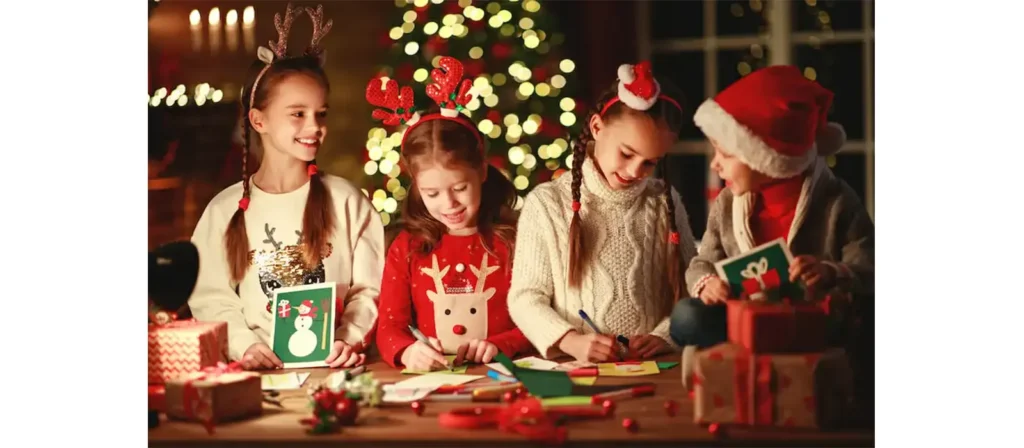
Classic Christmas Games to Spark Joy
1. Pin the Nose on Rudolph
- Adapted from the classic “Pin the Tail on the Donkey,” this game uses a large cutout of Rudolph without his nose.
- Blindfolded children take turns trying to pin a red circle where Rudolph’s nose should be.
- It’s a fun activity that encourages motor skills and coordination.
2. Christmas Bingo
- Create bingo cards with Christmas-themed pictures, such as candy canes, Santa hats, and snowflakes.
- Use small holiday treats like mini marshmallows or stickers as markers.
- The first child to complete a row yells, “Merry Christmas!” and wins a small prize.
3. Snowball Toss
- Use soft white balls or crumpled paper to mimic snowballs.
- Children take turns tossing “snowballs” into a decorated bucket or hoop.
- You can adjust the difficulty by changing the distance or using smaller targets.
Team-Building Holiday Games
Foster collaboration and teamwork with these group-focused activities.
1. Christmas Scavenger Hunt
- Hide holiday-themed items (like ornaments, candy canes, or small gifts) around the classroom.
- Provide each team with a list of items to find.
- The team that collects all the items first wins a festive prize.
2. Reindeer Relay Races
- Create teams and have children “gallop” like reindeer while wearing antler headbands.
- Include fun obstacles like “jumping over snowbanks” (pillows) or “pulling Santa’s sleigh” (dragging a lightweight box).
- This game is a great way to get kids moving while building camaraderie.
Interactive Learning Games with a Christmas Twist
Combine holiday fun with educational value for a well-rounded classroom experience.
1. Christmas Word Scramble
- Provide scrambled Christmas-related words like “Santa,” “ornament,” or “holiday.
- Children work individually or in teams to unscramble the words.
- Award points or small prizes for each correctly unscrambled word.
2. Holiday Math Challenges
- Use Christmas objects like ornaments or candy canes for counting and simple math problems.
- For example, “If Santa has three candy canes and gives two away, how many are left?”
- Tailor the difficulty to the children’s skill levels.
Tips for a Smooth Gaming Experience
- Preparation is Key: Gather materials in advance and explain the rules clearly to avoid confusion.
- Adapt to the Classroom Size: Choose games that fit your available space and number of students.
- Emphasize Fun Over Competition: Focus on participation and enjoyment rather than winners and losers to ensure all children feel included.
Singing Christmas Songs and Performing Holiday Plays
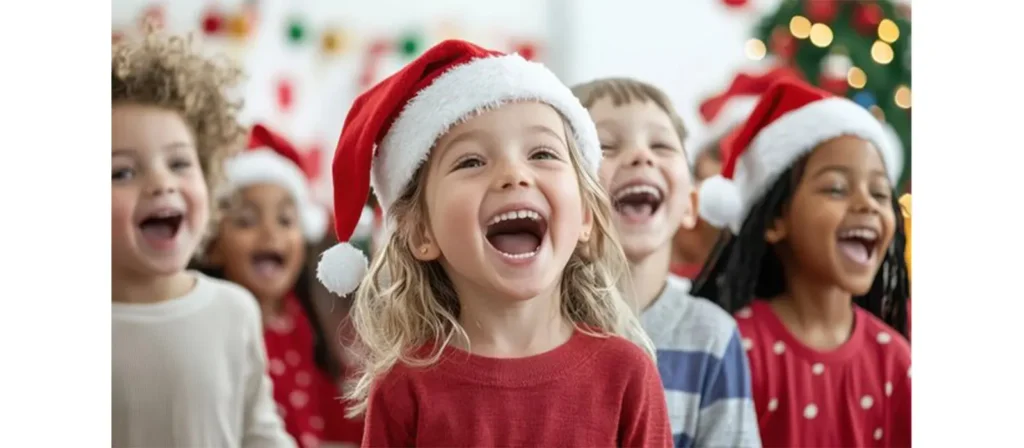
Joyful Christmas Songs for Young Children
Singing Christmas songs is a timeless and joyous way to spread holiday cheer while offering young children an excellent opportunity to develop their language and rhythm skills. Through Christmas activities for kindergarten, children engage in fun and festive songs that help enhance vocabulary, improve pronunciation, and strengthen listening skills. This activity brings the season’s magic to life and provides a meaningful way for children to connect with their peers through music. Singing together fosters a sense of community and belonging, making it an enjoyable and educational part of the holiday celebrations.
- Selecting the Right Songs
Choose songs with simple, repetitive lyrics and catchy melodies that are easy for children to learn and remember. Popular options include Jingle Bells, We Wish You a Merry Christmas, and Rudolph the Red-Nosed Reindeer. These tunes are familiar and fun and encourage participation, making them ideal for group singing. - Making Songs Interactive
To keep children actively engaged, incorporate hand motions, gestures, or even simple dance moves that align with the lyrics. For example, jingling small bells while singing Jingle Bells or mimicking reindeer movements during Rudolph the Red-Nosed Reindeer adds a playful touch that captivates young learners. These actions enhance their enjoyment and improve coordination and motor skills. - Rehearsing for Confidence
Practicing songs in small, supportive groups allows children to become comfortable with the melodies and lyrics. This step-by-step approach helps build confidence before performing in front of a larger audience. Smaller groups create a safe space for shy or nervous children to participate without feeling overwhelmed. - Creating a Supportive Atmosphere
Encourage children with positive reinforcement and praise during rehearsals. Keeping the atmosphere light-hearted and cheerful ensures they feel excited rather than pressured. Remind them that the goal is to have fun and enjoy celebrating together.
Organizing a Memorable Holiday Play
Holiday plays are a delightful and meaningful way for young children to explore the world of storytelling, teamwork, and performance skills, all while celebrating the joy and traditions of Christmas. Through Christmas activities for kindergarten, these performances provide children with the opportunity to express themselves creatively, build confidence, and develop important social skills like cooperation and communication. Whether acting in a Christmas skit or singing carols, children learn to work together, share ideas, and embrace their roles in a fun and supportive environment. These activities enhance their performance skills and bring the season’s magic to life, creating cherished memories for the children and their families.
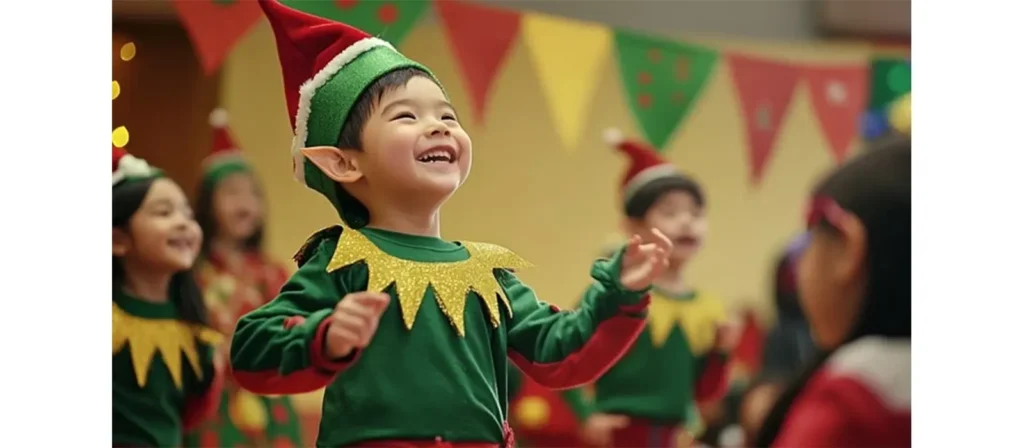
- Choosing the Right Script
When planning a holiday play, it’s important to choose a script that is short, simple, and aligned with the developmental levels of the children. Look for plays with clear, easy-to-understand dialogue and simple plotlines that young children can easily follow. For example, traditional stories like The Nativity or whimsical tales like Santa’s Workshop offer clear narratives and character roles perfect for young performers. Keeping the play straightforward ensures children stay engaged and confident throughout the process. - Costumes and Props
Costumes should be simple, affordable, and classroom-friendly. You can create fun, imaginative costumes using easily accessible materials like colored paper, felt, and fabric. Santa hats, reindeer antlers, and angel wings made from lightweight materials are easy to make and perfect for young children to wear. Instead of elaborate costumes, create props that enhance the story—like wrapped gift boxes, candy canes, or a cardboard sleigh. These props help bring the story to life and allow children to interact with their characters tangibly. - Encouraging Participation and Ownership
One of the most exciting aspects of holiday play is allowing children to have a say in their roles. Please encourage them to choose characters they feel excited about, whether it’s the role of Santa, an elf, a reindeer, or one of the wise men in a nativity scene. Allowing children to audition or select their parts helps foster a sense of ownership and pride in their performance. This can boost their confidence and excitement to perform in front of others. - Supporting Shy Children
For children who may be shy or nervous about taking the stage, it’s important to provide alternative ways to participate. Behind-the-scenes roles, such as managing props, helping with set changes, or assisting with stage organization, can be just as rewarding. These roles allow children to contribute to the performance while feeling less pressure to perform on stage. Additionally, behind-the-scenes tasks encourage teamwork, responsibility, and an understanding of how much effort goes into creating a successful production.
Giving Back: Charity and Community Involvement
Community giving and charity activities help those in need and create meaningful experiences for children, instilling values that will last a lifetime. By organizing charitable events, kids can learn the joy of helping others while developing a sense of social responsibility.
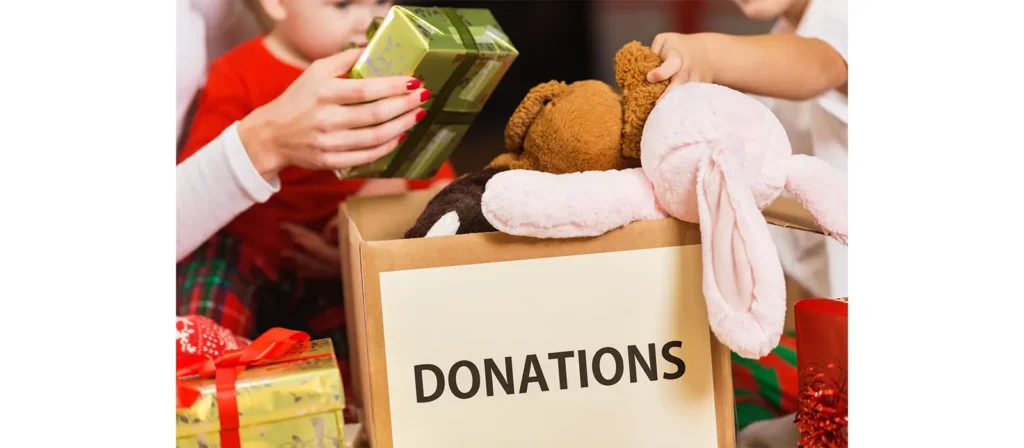
Encouraging Acts of Kindness Through Charity
Encouraging children to participate in acts of kindness is a powerful way to foster empathy and compassion. The holiday season provides the perfect opportunity to show children how small acts of kindness can make a big difference in the lives of others. Simple gestures, such as writing holiday cards for nursing home residents or helping neighbors with grocery shopping, teach children the importance of spreading joy in their communities.
Organizing a Toy Drive
To organize a successful toy drive, partner with local organizations or shelters that accept toy donations. Set up a collection box in the classroom, where children can bring in new or gently used toys to donate. To make the process more meaningful, involve the children in decision-making: ask them to select toys they believe will bring the most joy to other children. This helps children take ownership of the initiative and encourages them to reflect on the needs of others.
Donating to Local Charities or Families in Need
Another way to teach children the value of giving is by donating to local charities or needy families. This could involve collecting clothes, food, or other essential items for families struggling during the holiday season. Involve children in selecting and organizing donations, allowing them to experience firsthand the joy of helping others. This can also be an opportunity to teach children about some families’ real-world challenges, deepening their understanding of the importance of giving back.
Teaching Kids the Value of Giving and Sharing
Giving and sharing is one of the most valuable lessons children can learn. Through these charitable activities, children gain a deeper understanding of empathy and generosity, crucial life skills. Rather than simply telling children about the importance of sharing, hands-on charity activities provide them with a tangible way to practice these values. Additionally, consider incorporating storybooks and media that highlight the value of giving. Stories about characters who practice kindness and generosity can spark meaningful conversations and help children engagingly internalize these lessons.
Conclusion
By thoughtfully planning Christmas activities for kindergarten that incorporate creativity, teamwork, and charitable giving, teachers can create a festive and educational atmosphere in the classroom. These activities bring holiday cheer and provide valuable learning experiences, fostering skills like collaboration, empathy, and artistic expression. From crafting ornaments to participating in toy drives, each activity encourages children to engage meaningfully with the season’s values. Ultimately, these festive moments will leave lasting memories for children and their families, enriching the holiday season.
Discover Our Full Range of Products
Get access to our comprehensive catalog featuring top-quality furniture and play equipment for kindergartens and schools.

